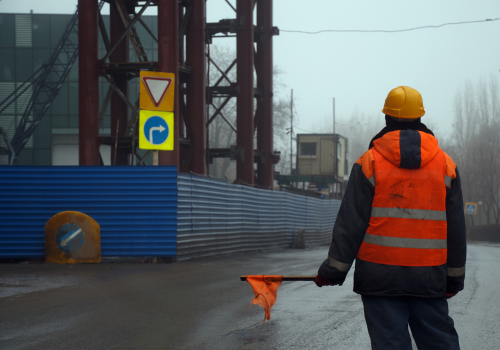 In 2021 42,015 died in motor vehicle traffic crashes, the highest number of fatalities since 2005 and the largest annual percentage increase (10.1%) since the statistics were first reported. 2022 saw a slight improvement, according to the National Highway Transportation Association.
In 2021 42,015 died in motor vehicle traffic crashes, the highest number of fatalities since 2005 and the largest annual percentage increase (10.1%) since the statistics were first reported. 2022 saw a slight improvement, according to the National Highway Transportation Association.
Construction firms know the dangers of working in or near traffic all too well. In an Associated General Contractors (AGC) and HCSSS Highway Work Zone Safety Survey, more than half of contractors surveyed (55%) had experienced at least one work zone crash in the past 12 months. A quarter had experienced more than five crashes. Nearly six in 10 contractors surveyed felt there is a greater risk of work zone crashes than 12 months prior, compared to just 3% who felt there was less risk.
Brian Turmail, Vice President of Public Affairs & Strategic Initiatives at Associated General Contractors of America reports that one of the findings of the survey is that it’s motorists who are often the ones injured or killed in work zone accidents. “This allows us to make the case for drivers to act not out of selflessness, but to act out of selfishness,” says Turmail. “They're the ones who are most at risk in those work zone crashes” Federal Highway Administration (FHWA) data also shows four out of five work zone fatalities were drivers or passengers. Here are four ways motorists can reduce their risk.
1. Slow Down
This one seems obvious, but in 2021, speeding was a factor in 31% of work zone crashes. Lower speed limits are needed because of unexpected land shifts and heavy equipment and trucks coming out of the work zone. “There's a reason there's a lower speed limit and everyone needs to pay close attention,” says Turmail. “It's not like driving on a straight highway,” says Turmail.
2. Eliminate distractions
The National Highway Traffic Safety Administration (NHTSA) defines distracted driving as any activity that could divert attention from the primary task of driving. Besides using phones or other electrics, distractions can also come from adjusting a radio, eating and drinking, reading, grooming, and interacting with passengers. According to research conducted by the University of Missouri, distracted driving can increase the crash and near-crash risk in a work zone by 546%.
3. Distance your vehicle from trucks
In 2021, NHTSA data shows 33% of work zone accidents involved a commercial motor vehicle. Narrow lanes and unexpected lane shifts make it challenging for large vehicles to navigate. By keeping your distance, you may be able to avoid a deadline collision.
4. Avoid Work Zones
If you are truly frustrated when traveling through work zones, use technology to avoid them altogether. Because most state DOTs use intelligent transportation systems to communicate with motorists, mobile navigation apps such as Google Maps and Waze will show construction activity. Maps of construction zones can also be found on DOT websites.
While construction crews take lots of precautions to account for work zone safety, motorists can help reduce work zone accidents, as safety is everyone’s responsibility. According to Turmail, Oklahoma recently acted to require a one-hour training class on Work Zone safety for all new drivers. In Washington state, contractors are now able to park decoy patrol cars with flashing lights in the work zone. AGC would like to see the same social stigma around speeding in the work zone as there is for drunk driving.
We need everyone to get home safely.
Read Next
Get Home Safe: Work Zone Safety Tips All Construction Crews Must Know










